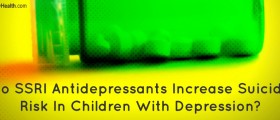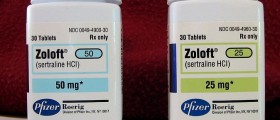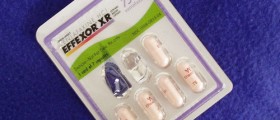Celexa is the brand name of the antidepressant citalopram which is made by the company Forest Laboratories, Inc. It belongs to the group of antidepressants of the selective serotonin re-uptake inhibitors (SSRI’s) which increases the availability of serotonin in the brain.
Signs and symptoms of depression
Worldwide, citalopram is indicated for the management of major depression which includes the following signs and symptoms:
- Decreased mood.
- Insomnia.
- Decreased drive for pleasurable activities.
- Decreased sexual drive.
- Decreased appetite.
- Sleeping longer hours in the morning.
- Social withdrawal.
- Possible suicidal thoughts.

In Australia and most European countries, citalopram is also indicated for panic disorders with or without agoraphobia (fear of being outdoors among people). Off-label, it is also used to treat conditions such as anxiety, premenstrual dysphoric disorder (or PMS symptoms) as well as obsessive-compulsive disorder (OCD), although the latter is indicated to be treated with citalopram in Spain.
Dosage - start low and go slow
The starting dose of the medication will depend on its indication but the general rule of thumb with antidepressant medication is, “start low and go slow”. Citalopram will be increased gradually, after 3-4 weeks, if there’s little to no improvement in the patient’s symptoms. If the maximum dosage is still ineffective for the patient, then an alternate medication such as escitalopram can be initiated.
Side effects of citalopram
Side effects of citalopram can include the following:
- Decreased sexual function, difficulty getting an erection and trouble achieving orgasm. These issues tend to resolve as depression goes into remission, though.
- Can have minor sedating effects. In this case, rather take the medication at night then.
- Increased appetite and weight gain.
- Vivid dreams.
- Nausea and vomiting.
- Increased sweating, diarrhea and a dry mouth.
- This medication can cause cardiac arrest in patients with abnormal heart rhythms. In this case, the maximum dose in these patients is 40mg per day and in patients over 60 years of age, 20mg per day.
How to stop taking antidepressants and avoid serotonin syndrome?
Suddenly discontinuing this type of medication can result in a condition called “serotonin syndrome”. It is very important then that one doesn't suddenly stop taking these types of medication without discussing it with your health care professional first. If you are to stop this medication, then it should be tapered down and not just stopped.
The symptoms and signs of this issue include:
- Restlessness, agitation and tremors.
- Confusion.
- Increased heart rate and blood pressure.
- Heavy sweating.
- Dilated pupils.
- Shivering.
- Headaches.
What is severe “serotonin syndrome”?
Severe “serotonin syndrome” can be a life-threatening situation and these patients need to be managed in an emergency setup. The signs and symptoms associated with it include:
Unconsciousness.
Seizures
High fevers.
Irregular heartbeat.
Dangerous drug interactions when combined with specific products
Drug interactions with citalopram can occur when combined with products such as St. John’s wort, tryptophan or 5-HTP supplements as this can increase the chances of experiencing “serotonin syndrome”.
- Photo courtesy of SteadyHealth







-Uses%2C-Side-Effects-And-Risks_f_280x120.jpg)








